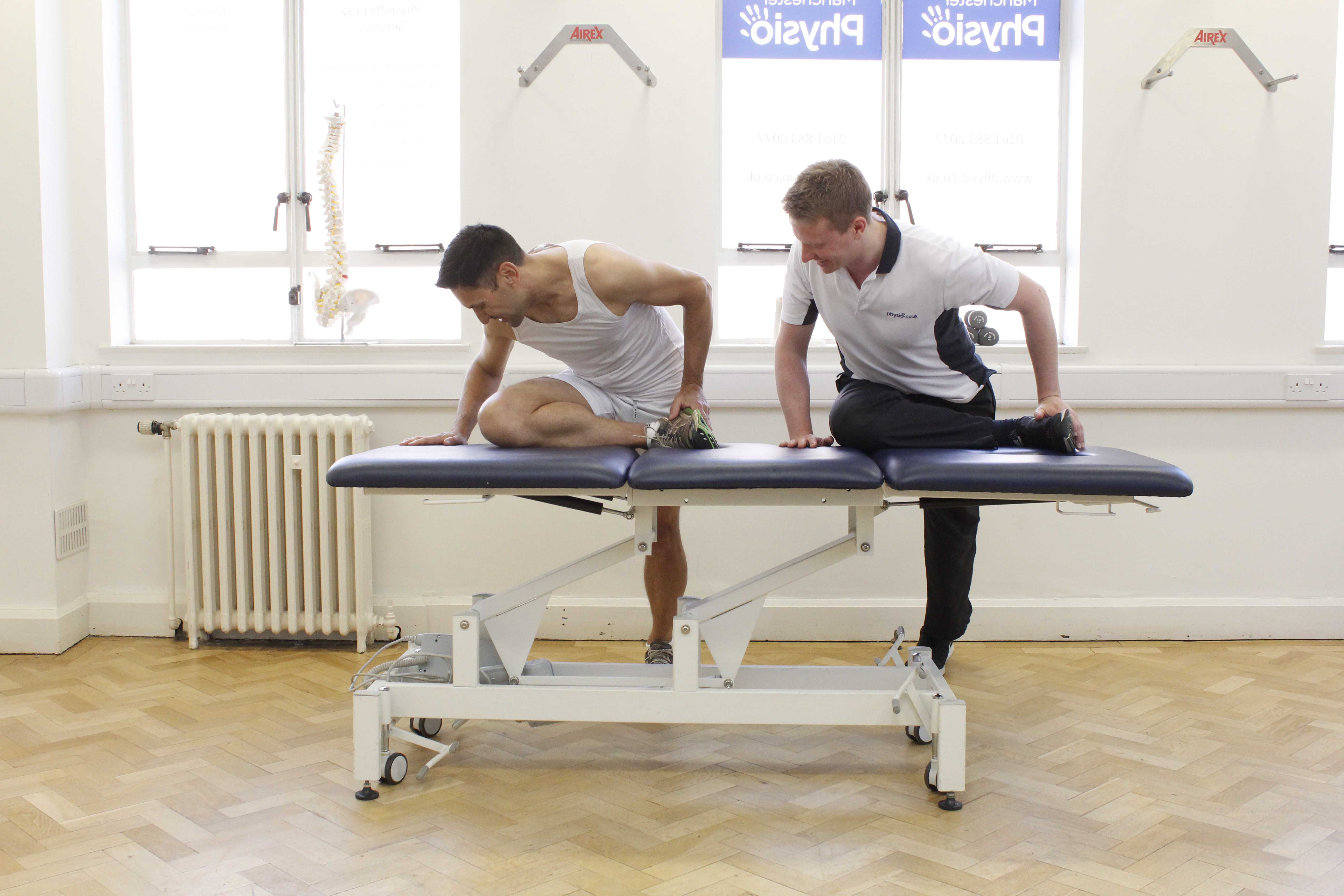Our display screen equipment assessments can be provided to whole offices, small groups of employees or single employees / individuals.
We provide two types of DSE assessment. The type of assessment required will depend on the individual, their symptoms (if any) and the complexity of the report required following the assessment.
Complex DSE assessment
This type of DSE assessment is provided for employees that have symptoms that they attribute to the use of their DSE. The assessment is often required in order to stop an employee absence or to allow an employee to return to work. Verbal advice from the physiotherapist and a comprehensive typed recommendations report are provided following the assessment.
Simple DSE assessment
This type of DSE assessment is provided for employees who do not have any symptoms that they attribute to the use of their DSE. Verbal advice from the physiotherapist and a brief typed report are provided following the assessment.
 Above: Specialist physiotherapist guiding client through hip and knee stretches for runners
Above: Specialist physiotherapist guiding client through hip and knee stretches for runnersComplex Display Screen Equipment (DSE) Assessments
Complex DSE assessments are suitable for individuals who require an assessment as they are at increased risk whilst using display screen equipment. Individuals that are appropriate for a complex assessment are those that have a current condition or injury that affects the way in which they interact with their display screen equipment. Complex assessments are provided to ensure that the individual has their workstation set up as ergonomically as possible. This will minimise the risk of problems arising from the use of the display screen equipment.
Complex DSE assessments are often provided for individuals with:
- Neck problems
- Back problems
- Upper limb problems
- Lower limb problems
- Pregnancy related problems
- Postural problems
Assessment - Part A
In a private room. The first part of the assessment information gathering and is performed away from the workstation and other colleagues. Areas such as past medical history, history of present condition, work role, medication, aggravating factors, easing factors etc. are discussed.
Assessment - Part B
At the workstation. The second part of the assessment is physically assessing the individual at the workstation. Workstation set-up, potential problems, how to overcome potential problems, posture and any additional equipment required are all discussed during the assessment.
Report
Provided within 48 hours. A report is provided detailing a brief history of the problem, the findings of the assessment, a detailed summary of the assessment and actions required to eliminate the problems and risk factors raised in the assessment. Recommended products (such as office chairs, foot rests, document holders, monitor raises) are detailed in the report along with stockists of the recommended items.
Simple Display Screen Equipment (DSE) Assessments and Reports
Simple DSE assessments are suitable for individuals who require an assessment but do not have any symptoms that they associate with the use of display screen equipment. Simple assessments are provided to ensure that the individual has their workstation set up as ergonomically as possible. This will minimise the risk of problems arising from the use of the display screen equipment.
Assessment
Performed at the workstation. The workstation is evaluated and set up in the optimal position. DSE ergonomics are discussed with the individual along with, potential problems, posture, additional equipment (such as monitor raises or footrests) and simple exercises to prevent stiffness and muscular problems.
Report
Provided within 48 hours. A report is provided detailing the findings of the assessment, any recommendations made and the actions required following the assessment in order to eliminate risk factors and potential problems.
For further information regarding our services for businesses or to arrange a DSE assessment please email office@physio.co.uk or call Physio.co.uk on 0330 088 7800 or contact us.

 0330 088 7800
0330 088 7800


































